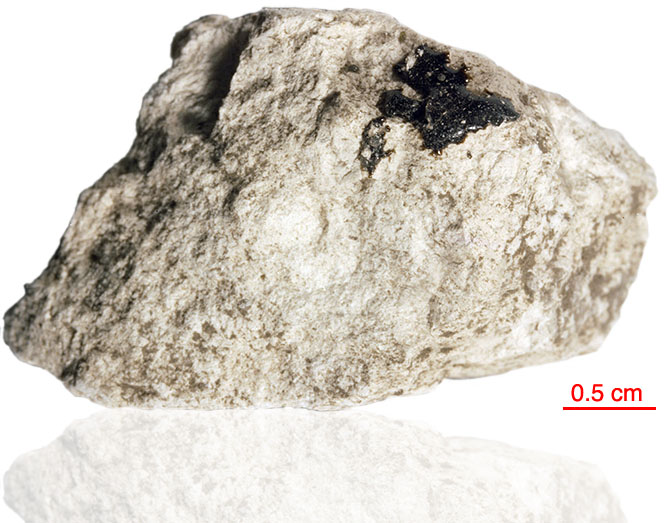
Fact sheet
65789 is a chalky white rake sample and had been described as a cataclastic anorthosite. Plagioclase does not show shock features; the mafic minerals are not “equilibrated”. Minor chromite and ilmenite are present. It is a ferroan anorthosite. Plagioclase feldspar shown in rotations 1 & 2 show well preserved lamellar twinning consistent with the sample’s unshocked nature.
The sample weighed 12.2 grams before analysis and has not been dated.
Further details of this and other Apollo samples are here: http://curator.jsc.nasa.gov/lunar/
The Apollo 16 landing site was in the hilly region around Descartes crater in the lunar highlands. The landing spot was chosen to allow the astronauts to gather geologically older lunar material (Descartes Formation and the Cayley Formation) than the samples obtained in the first four landings, which were in or near lunar maria.
The mission lasted 11.1 days, with a stay on the lunar surface of 71 hours. The crew were on the lunar surface for 20.2 hours during which they traversed approximately 27 kilometers and collected approximately 96 kilograms of samples.
Apollo 16 was launched on 16 April 1972.






